Rye whiskey and bourbon, two beloved American spirits, share a family resemblance, yet their unique origins set them apart.
The story of rye vs bourbon begins with the early settlers who brought their distilling expertise to the New World.
Rye whiskey traces its roots to the chilly climates of Pennsylvania and Maryland, where hardy rye grain thrived.
In contrast, bourbon, often called “America’s Native Spirit,” was born in the lush hills of Kentucky.
As we look at the intricacies that distinguish these two whiskeys, we’ll uncover the fascinating history and regional influences that shaped their distinct characters.
Join us on a journey through time as we delve into the origins of rye and bourbon and discover how their unique beginnings have influenced the spirits we savor today.
Early Beginnings of Rye Whiskey
Rye Whiskey’s story in America began with the arrival of early settlers in the northeastern states, particularly in Pennsylvania and Maryland.
These pioneers brought their expertise in distilling and a hardy grain that would become the backbone of American rye whiskey: rye.
Origins in America
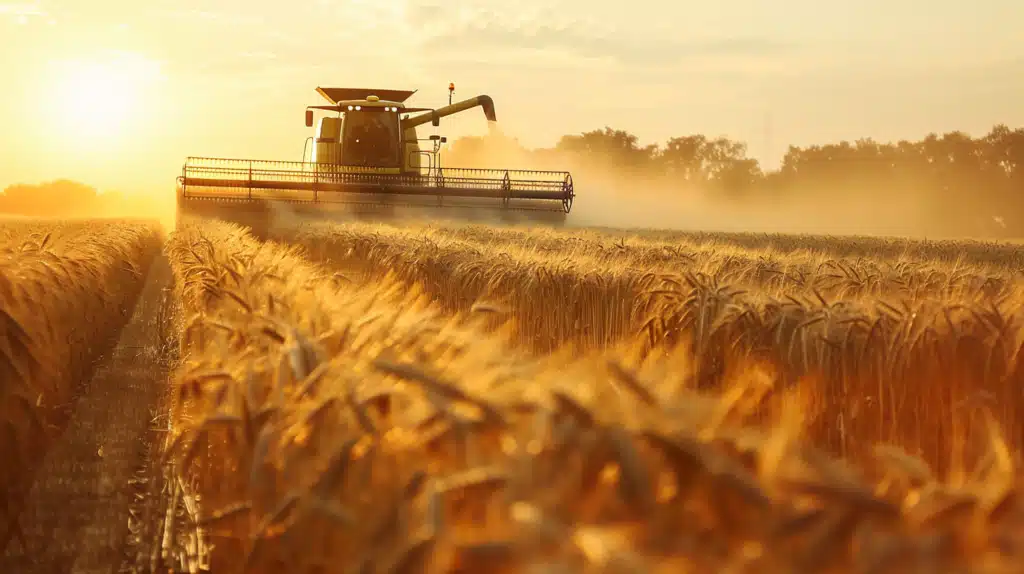
The cool, damp climates of Pennsylvania and Maryland proved ideal for growing rye grain, which was more tolerant of the region’s harsh winters compared to other crops like corn.
As settlers established their new lives, they began distilling excess rye into whiskey, laying the foundation for a spirit that would become synonymous with the region.
Rye whiskey quickly gained popularity among the northeastern states, thanks to the abundance of rye grain and the ingenuity of local distillers.
The spirit’s bold, spicy flavor set it apart from other whiskeys, making it a favorite among discerning drinkers.
Historical Context
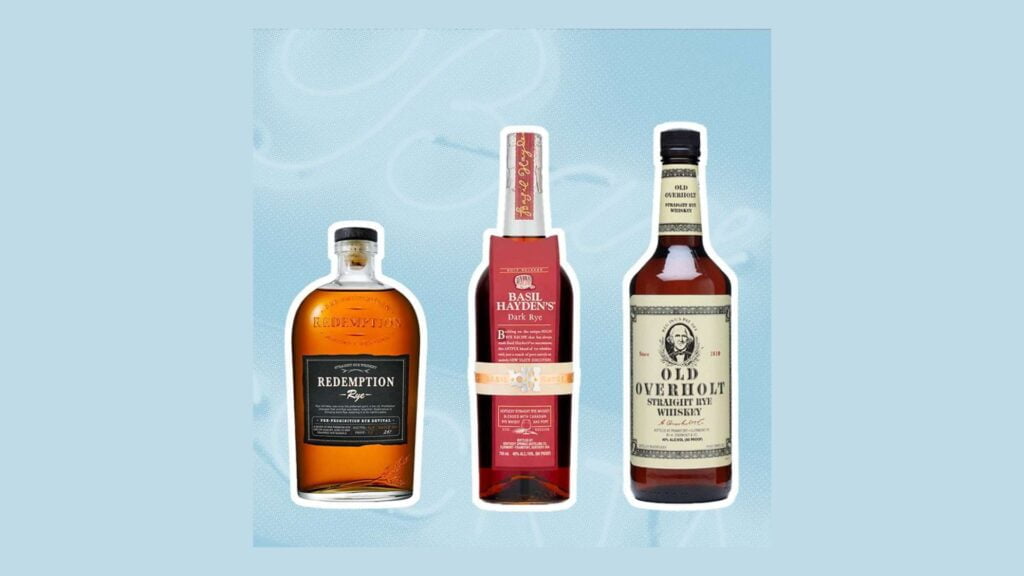
During the American Revolution, rye whiskey production experienced a significant boost.
With the British blockade of molasses imports from the Caribbean, the colonists faced a shortage of rum, their preferred spirit at the time.
As a result, they turned to locally produced rye whiskey as a substitute, further cementing its place in American drinking culture.
Rye whiskey became a staple in early American spirit consumption, finding its way into classic cocktail recipes like the Manhattan and the Old Fashioned.
Its bold, assertive character made it a perfect match for the era’s robust drinking preferences and helped establish rye as an ideal American spirit.
As we explore the origins of rye whiskey, it’s clear that the spirit’s early beginnings are deeply intertwined with the history and resilience of the American people.
In the next section, we’ll discover how bourbon emerged from the frontier lands of Kentucky to become rye’s sweeter, corn-based counterpart.
The Birth of Bourbon
As rye whiskey flourished in the northeastern states, another distinctive American spirit was taking shape in the heart of Kentucky: bourbon.
This corn-based whiskey would eventually become the sweeter, smoother counterpart to the bold and spicy rye.
Geographical and Cultural Roots
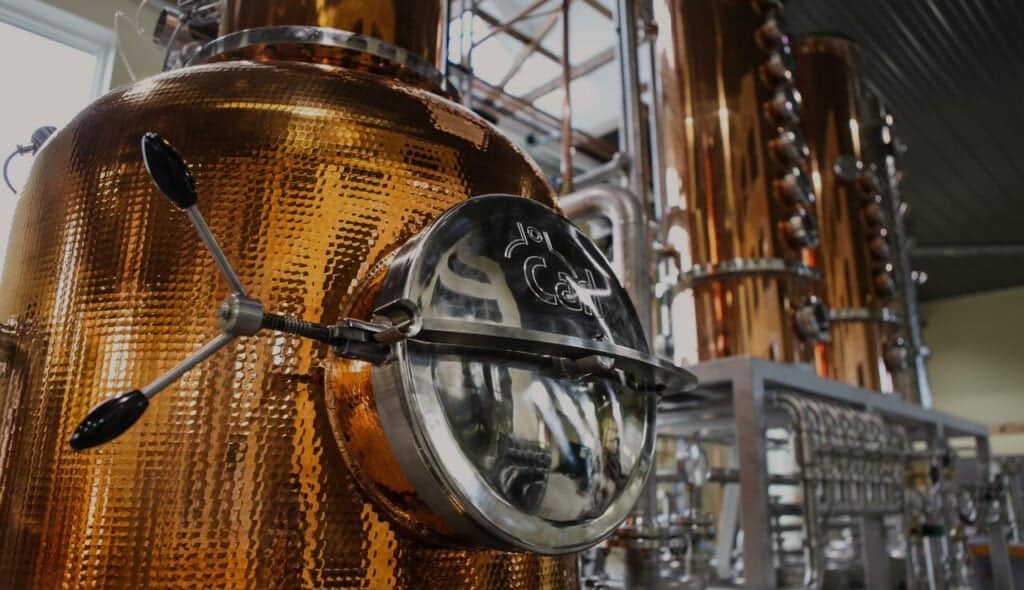
Kentucky, with its fertile soil and rolling hills, proved to be the perfect birthplace for bourbon.
The region’s abundant natural resources, including limestone-filtered water and a climate well-suited for aging whiskey, set the stage for bourbon’s rise to prominence.
The cultural roots of bourbon can be traced back to the influence of Scottish and Irish immigrants who settled in the area.
These settlers brought their time-honored distilling techniques and adapted to the new world’s ingredients and conditions.
Evolution Over The Years
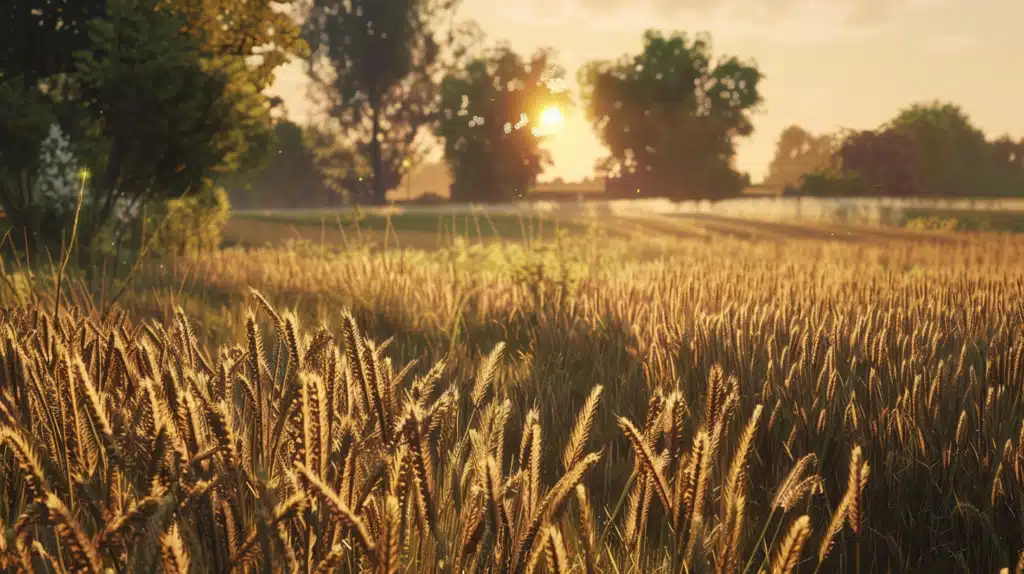
As the settlers of Kentucky began to establish their whiskey-making traditions, they discovered corn was more readily available and easier to grow than rye.
This led to a gradual shift in the base ingredient of their whiskey, with corn replacing rye as the primary grain.
Over time, this corn-based whiskey evolved into what we now know as bourbon.
The spirit’s distinct characteristics were shaped by the unique conditions of Kentucky, including charred oak barrels for aging, which imparted a smooth, mellow flavor and a warm amber color.
Legal requirements also played a role in defining bourbon. In 1964, the U.S. Congress recognized bourbon as a distinctive product of the United States, mandating that it must be made with a minimum of 51% corn and aged in new, charred oak barrels.
The birth of bourbon marked a significant moment in American whiskey history, showcasing the ingenuity and adaptability of the nation’s early distillers.
As we continue our exploration of the differences between rye and bourbon, we’ll research deeper into the unique ingredients and production methods that set these two spirits apart.
Distillation and Development
While rye whiskey and bourbon share many similarities in their production processes, their distinct ingredients and subtle differences in distillation and aging contribute to their unique flavor profiles.
Techniques and Ingredients
At their core, both rye whiskey and bourbon undergo the essential steps of fermentation, distillation, and aging.
However, the primary difference lies in the composition of their mash bills, which are the recipes of grains used in the whiskey-making process.
Rye whiskey, by law, must contain at least 51% rye grain in its mash bill.
This high proportion of rye contributes to the spirit’s signature spicy, peppery, and bold flavor profile.
The remaining ingredients in a rye whiskey mash bill often include corn, malted barley, or other grains, each adding its subtle nuances to the final product.
On the other hand, bourbon must be made with a mash bill containing at least 51% corn.
This abundance of corn lends bourbon its distinctively sweet, full-bodied flavor, with notes of vanilla, caramel, and sometimes fruit.
The secondary grains in a bourbon mash bill, such as rye or wheat, help to balance the sweetness and add complexity to the spirit.
Legal and Production Differences
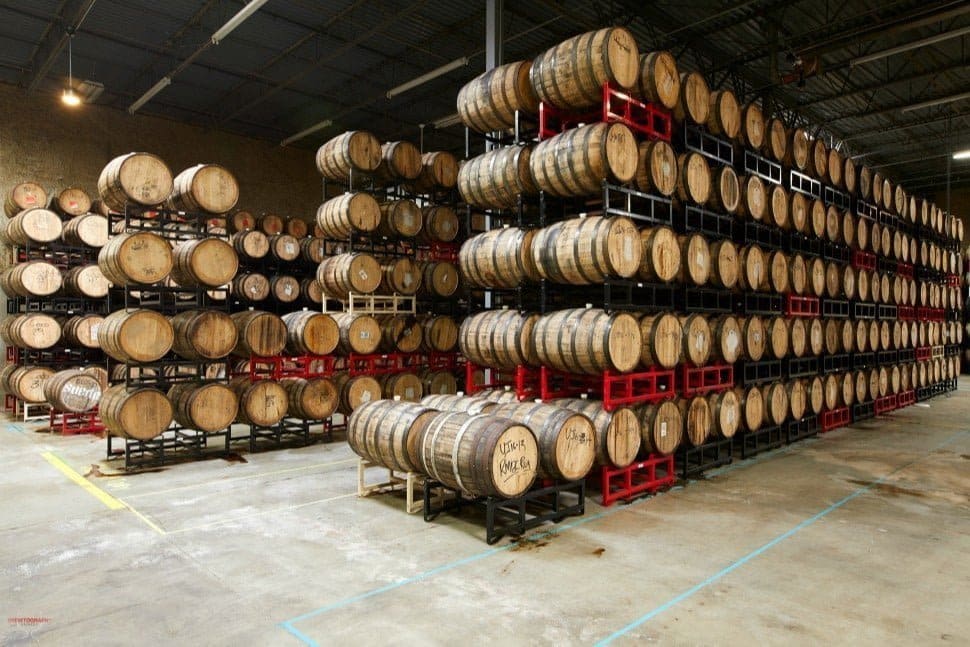
Both rye whiskey and bourbon must be aged in new, charred oak barrels, a process that contributes to their rich colors and flavors.
However, the differences in subtle legal requirements and production methods further distinguish the two spirits.
Rye whiskey can be distilled to a higher proof than bourbon, which must be distilled to no more than 160 proof.
Additionally, rye whiskey has no minimum aging requirement, although most producers age it for at least two years to achieve a more refined flavor profile.
Conversely, Bourbon must be aged for at least two years to be labeled “straight bourbon.”
It must also enter the barrel at no more than 125 proof and be bottled at a minimum of 80 proof. These legal requirements help to ensure consistency and quality across the bourbon category.
As we’ve seen, the distillation and development processes of rye whiskey and bourbon, while similar in many ways, have distinct differences that contribute to their unique identities.
In the next section, we’ll explore how these differences translate into the memorable flavors and aromas that have made these two spirits enduring favorites among whiskey enthusiasts.
Impact of Prohibition and Industrial Changes
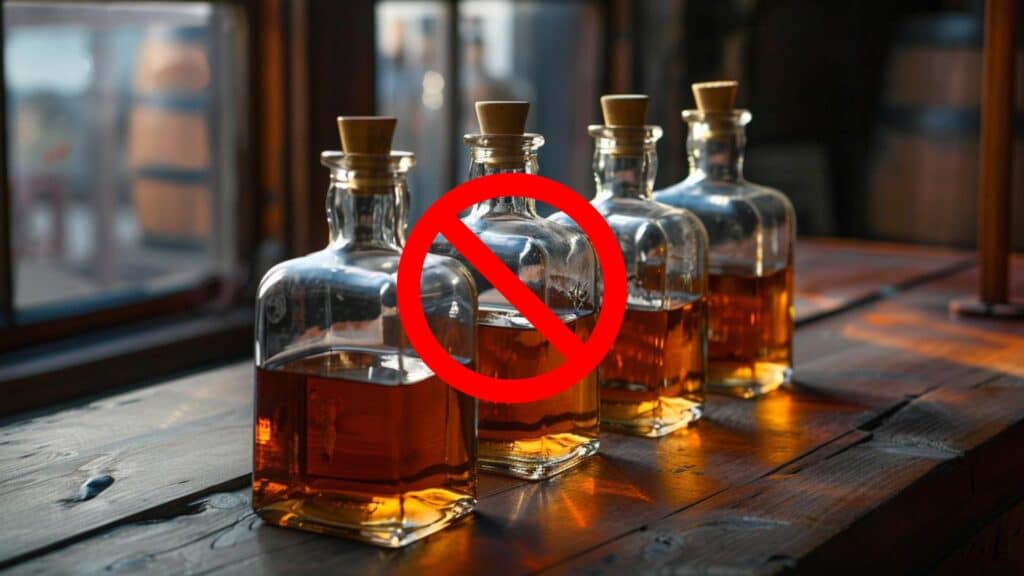
The histories of rye whiskey and bourbon took a dramatic turn with the enactment of Prohibition in the United States, which lasted from 1920 to 1933.
This period of enforced temperance had far-reaching consequences for both spirits, altering the course of their development and popularity.
Prohibition’s Effect
During Prohibition, the production and sale of alcohol were outlawed, dealing a severe blow to the American whiskey industry.
Rye whiskey, which had already begun to decline in popularity due to changing tastes and the rise of other spirits, was hit particularly hard.
Many rye distilleries were forced to close their doors, and the once-thriving rye whiskey tradition nearly disappeared.
Bourbon, while also suffering during Prohibition, managed to maintain a foothold through the use of “medicinal” whiskey prescriptions.
A few distilleries were permitted to continue producing bourbon for medicinal purposes, which helped to keep the spirit alive during this challenging period.
Post-Prohibition Resurgence
When Prohibition was finally repealed in 1933, the American whiskey industry began the slow process of rebuilding.
However, the landscape had changed, and the recovery of rye whiskey and bourbon took divergent paths.
Rye whiskey struggled to regain its former prominence, as many of the old rye distilleries had been shuttered, and the expertise and traditions surrounding the spirit had been lost.
The few remaining rye brands found it difficult to compete with the growing popularity of other spirits, such as gin and vodka.
In contrast, bourbon experienced a resurgence in popularity, particularly after World War II.
The spirit’s sweeter, more approachable flavor profile appealed to a wider audience, and bourbon became a quintessential American whiskey.
Brands like Jim Beam and Maker’s Mark helped popularize bourbon nationally and internationally, cementing its status as a cultural icon.
The impact of Prohibition and the subsequent industrial changes had a lasting effect on the trajectories of rye whiskey and bourbon.
While bourbon emerged as the dominant American whiskey, rye was left to rebuild its identity and reclaim its place in the hearts of whiskey enthusiasts.
In recent years, however, rye has experienced a remarkable revival, with new generations discovering the bold, spicy character that made it a favorite among discerning drinkers.
Conclusion
While rye whiskey and bourbon share some similarities in production, their unique ingredients and flavor profiles set them apart.
Rye’s spicy, powerful character from the rye grain makes it an ideal choice for bold cocktails.
At the same time, bourbon’s sweeter caramel notes from the corn mash bill offer a smoother sipping experience.
Whether you prefer the kick of rye or the mellower embrace of bourbon, exploring these two iconic American whiskeys is worth taking.
So grab a glass, savor the nuances, and discover your preference between these celebrated spirits. And if you can’t decide, remember – there’s no rule against enjoying both!




